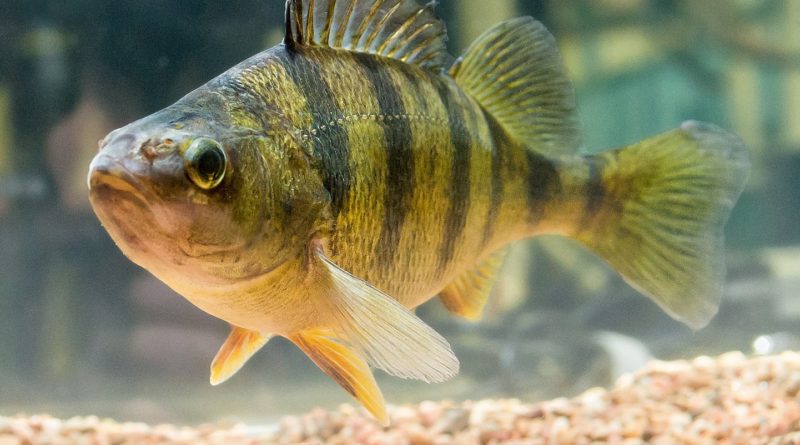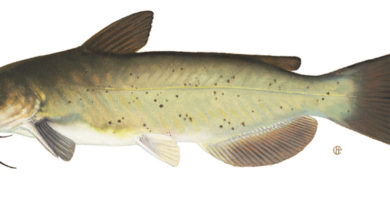Yellow Perch
The Yellow Perch (Perca flavescens), known by various monikers such as perch, striped perch, and American perch, holds a special place in the freshwater ecosystems of New York. First described in 1814 by Samuel Latham Mitchill, a New York researcher, this species shares a visual kinship with the European perch and is sometimes even regarded as a close subspecies. Its traits, including age, growth rates, and size, showcase variability due to the interplay of day length and annual water temperatures within the state’s waters.
Over their usual lifespan of 9 to 10 years, fully grown yellow perch generally span between 4 to 10 inches (10 to 25 cm) in length. The global record for the largest yellow perch catch traces back to 1865, when a remarkable specimen was pulled from the waters of Bordentown, New Jersey. This extraordinary catch measured an impressive 18 inches (46 cm) in length and tipped the scales at 4 lb 3 oz (1.9 kg).
Characterized by its elongated, laterally compressed body, the yellow perch boasts a sub-terminal mouth and a relatively lengthy, blunt snout. Adorned with rough ctenoid scales, its body proudly displays a pair of distinctive dorsal fins. The upper body is a canvas of shades ranging from green and olive to golden brown, often adorned with 6 to 8 vertical bars on the flanks, set against a backdrop of yellow or yellowish-green. During the spawning season, male yellow perch may sport pronounced red or yellow hues on their lower fins.
Yellow perch inhabit various habitats in the Hudson Valley and New York, encompassing the tributaries of the Arctic and Atlantic Oceans, the Great Lakes, the St. Lawrence River, and the Mississippi River basins. Beyond these native realms, they’ve also made appearances in diverse water bodies across North America, propelled by both recreational and commercial fishing introductions. These introductions span official avenues and unauthorized ones, expanding their reach well beyond their natural ranges.
Yellow Perch In The Hudson Valley
Within the state’s waters, yellow perch frequently populate the littoral zones of lakes, leisurely-moving rivers, brackish waters, and ponds. Their voracious appetites contribute to their dominance in lakes, where they often emerge as the dominant species.
Reproduction-wise, yellow perch attain sexual maturity within 2 to 4 years, engaging in an annual springtime spawning ritual. This process is marked by communal behavior, as females release gelatinous egg strands that find anchor on various structures. The ensuing hatch takes place over 11 to 27 days, with the timeline influenced by the prevailing environmental conditions.
Celebrated for their mild flavor and the excitement they bring to anglers, yellow perch are highly coveted in both recreational and commercial fishing circles. Their ease of capture and delightful taste make them a preferred catch for many. In response to market demands, the practice of aquaculture has gained momentum, offering a sustainable alternative to wild harvesting and aiding conservation endeavors.
The yellow perch stands as a notable and emblematic presence within New York’s freshwater landscape. Its ecological significance and recreational allure contribute to its enduring popularity and appreciation, casting a ripple effect across the state’s aquatic realms. It’s noteworthy that the New York State Record for yellow perch stands at an impressive 3 lb. 8 oz., a feat achieved by George Boice on April 28, 1982, using a Minnow lure in Lake Erie, Erie County.
Last Updated on August 5, 2023 by Fish HV Contributors



